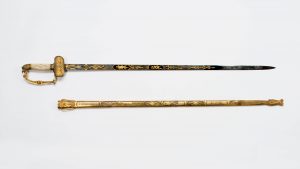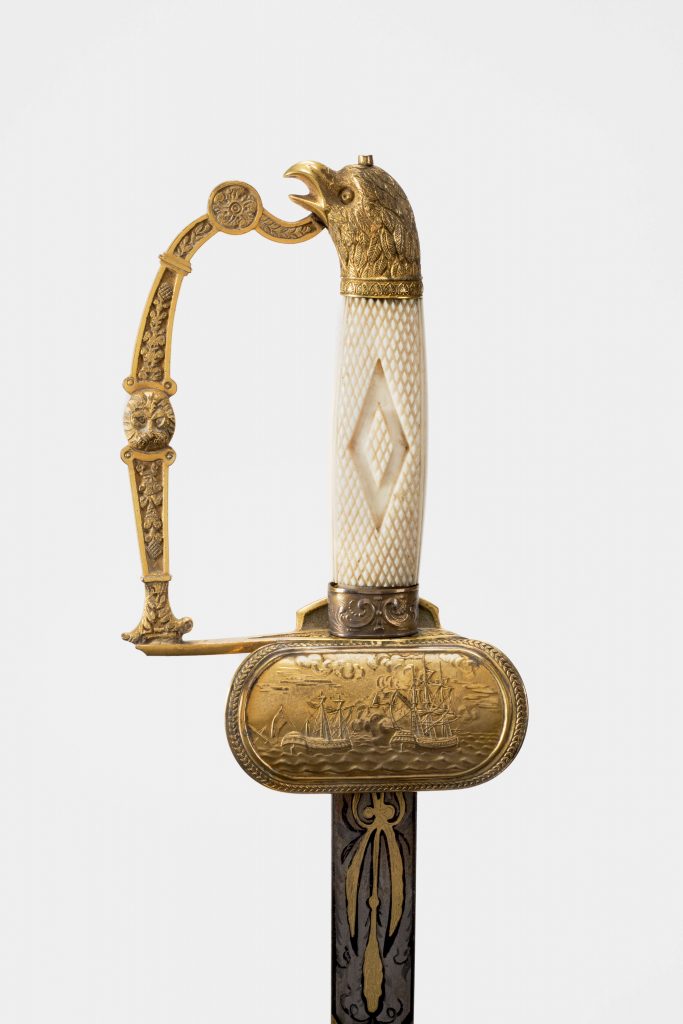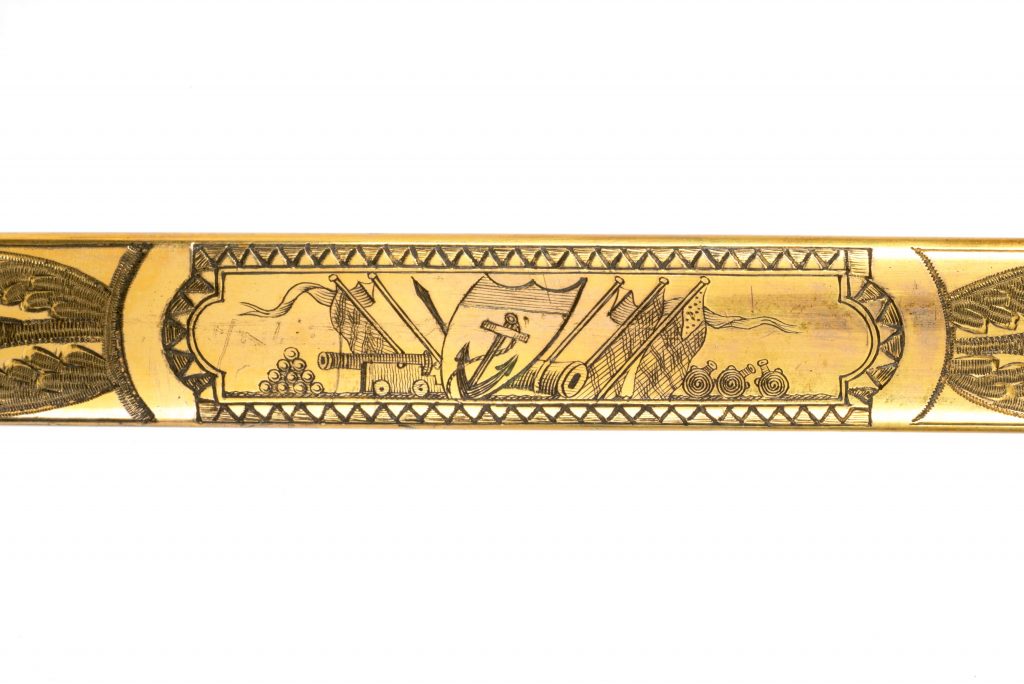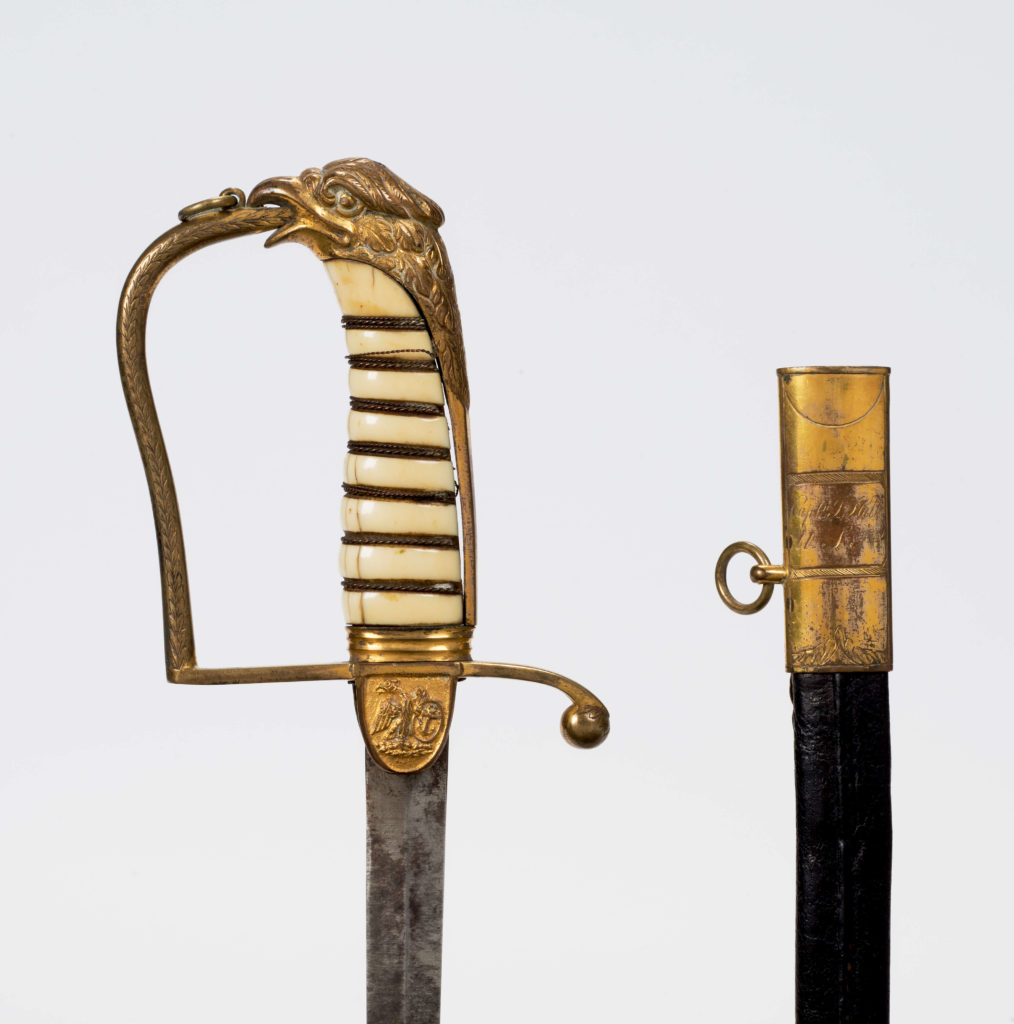



Beekman V. Hoffman’s Sword and Scabbard
It is likely Beekman V. Hoffman was presented this sword and scabbard for his elite social position rather than for his naval heroics. Beekman Verplaenk Hoffman (1789-1834) was a member of New York’s Knickerbocker families, whose ancestors arrived in New Amsterdam (present day southern tip of Manhattan Island) from Holland and Rhineland in the 1640s and 1650s. Beekmans, Verplaenks and Hoffmans are well-represented in histories of New Amsterdam and colonial New York.
Though Hoffman was later promoted to master and post-captain, his service as lieutenant on USS Constitution during the War of 1812 was the pinnacle of his career. He gained short-lived fame in 1813 when he clashed in print with Commodore William Bainbridge. As part of the ongoing debate in the American press over the true number of United States seamen impressed into Britain’s Royal Navy (anti-war Federalists claimed the pro-war Democratic Republicans’ estimates were inflated), Hoffman swore that he encountered dozens of impressed seamen on HMS Java after the ship was taken by Constitution in December of 1812. Bainbridge, however, took exception to Hoffman’s statement and forced him to issue a retraction. Both Hoffman’s initial statement and the retraction were printed in newspapers from Maine to South Carolina.
Hoffman appeared in the press again in 1815, this time as prize-master of HMS Cyane, which was defeated by USS Constitution in February of that year. He captained the frigate into New York Harbor to great fanfare from the merchants and Knickerbocker elite of New York. After the war, he captained several U.S. Navy vessels on South American cruises before succumbing to a “dropsical affliction of the chest” (almost certainly edema due to congestive heart failure) at his home in Jamaica, Queens, New York in 1834. He was 46 years old.
This sword, which retains its scabbard, is an excellent example of the eagle-head swords unique to the United States military in the late 18th and 19th centuries. Such swords are highly sought-after collectors’ items.
The inscription on Hoffman’s sword calls the subscribers “citizens of New York,” but does not specify New York City, New York State, or another fraternal/political organization. The makers of this sword remain equally mysterious. The weapon and its scabbard exhibit design elements characteristic of two well-known craftsmen who worked in different cities and who are not known to have collaborated with each other. The “grapevine motif” in the ferrule band around the mouth of the scabbard is characteristic of the Philadelphia manufacturer F.W. Widmann, who made many similar eagle-headed swords. However, the knuckle guard on the sword itself is virtually identical to one created by Manhattan metalworker John Targee. The guard shape is identical, as is the down-turned shell on the hilt, and the lion head motif is very distinctive. While Widmann and Targee are not known to have worked together, the relatively few American artisans who worked in precious metals did collaborate frequently, making it possible that the Philadelphia and Manhattan sword makers contributed to Hoffman’s gift.
Date Created
1812-1834
Medium
Silver, Brass, Ivory, Metal
Dimensions
[W]3 in. (handle) [D]36 3/4 in.
Catalog Number
1280.1a,b
Credit Line
USS Constitution Museum Collection. Mrs. Alexander Gillmor Gift.
Terms of Use

This work is licensed under a Creative Commons Attribution-NonCommercial-NoDerivs 3.0 Unported License
